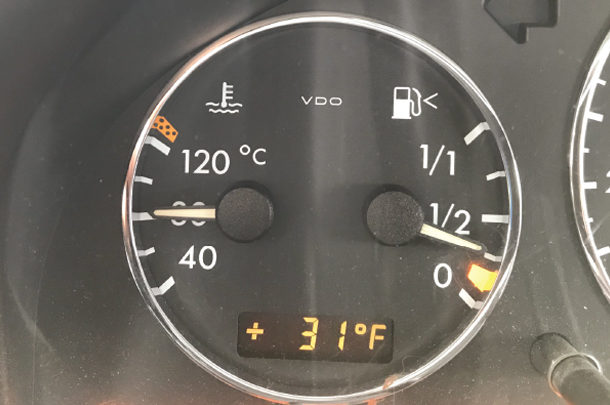While the horse and land owner probably expected my recommendation for improved pastures to include soil fertility, weed control or improved forage species, my advice was simply to reduce the number of horses being grazed or to buy more land.
Pastures may start with higher-yielding forages such as alfalfa, orchardgrass and red clover but transition to low-yielding, not as drought-tolerant species such as Kentucky bluegrass, white dutch clover or even weeds when overgrazing occurs.
 Overgrazing reduces the growth and development of the improved forages because meristems (where growth and development begin) find their way to the mouth of the close-grazing livestock and never have a chance to differentiate into leaves and stems. Kentucky bluegrass and white dutch clover meristems are so close to the soil surface they can avoid being damaged by continuous close grazing.
Overgrazing reduces the growth and development of the improved forages because meristems (where growth and development begin) find their way to the mouth of the close-grazing livestock and never have a chance to differentiate into leaves and stems. Kentucky bluegrass and white dutch clover meristems are so close to the soil surface they can avoid being damaged by continuous close grazing.
Remembering a simple crop physiology equation as your livestock begin to graze a perennial pasture just might help forages become more productive.
Photosynthesis - Dark Respiration = Growth + Stored Reserves
Photosynthesis is the process in the plant factory, specifically located in the chloroplasts, that ultimately results in the transport of sugar through the phloem, an internal plumbing network, to locations in the plant where energy is needed for respiration, growth or storage.
Aerobic respiration is another fundamental process for plants. It is the process in which plant tissues gain usable energy by oxidizing sugars in the mitochondria to release energy needed for plants to grow and reproduce. Depending on environmental conditions, 30 to 80 percent of the sugar produced by photosynthesis is used for respiration. Aerobic respiration’s resulting energy is utilized for growth respiration and maintenance respiration.
Growth respiration is used for the development of new plant tissues, whereas maintenance respiration is used for non-growing tissues. Growth respiration happens where cells are active with division and elongation, and also as cells age and form secondary cell walls and lignin. The difference of total sugar produced by photosynthesis and respiration of some of it is an increase in aboveground (leaves, stems and seedheads) and below-ground (roots and rhizomes) yield and storage reserves.
Adequate storage reserves are important to the well-being of forage plants, whether harvested by grazing livestock or a mower. Location of storage reserves differs among forage species. Legume taproots, lower stem bases of grasses, the swollen bulb-like structure called a corm of timothy, and forage species that have rhizomes and stolons are where carbohydrate and protein reserves are located. Storage reserves are mobilized to produce necessary energy needed for regrowth within a grazing season or to begin new growth of perennial species in the very early spring.
The time between forage harvest and the reaccumulation of storage reserves must not be compromised with harvest too soon, or loss of stand will occur. This is because the return to the critical level of storage reserves necessary for plant function has not been achieved.
One major advantage of rotational grazing a pasture subdivided with paddocks, as compared to having one large pasture, is that there is plant recovery time provided for reaccumulation of storage reserves. Lack of time for adequate development of the photosynthetic factory or repletion of the storage reserves is plant management headed toward dire consequences.
Speed of rotation among paddocks in a pasture management system should not be locked in by a set number of days. The time of year, plant productivity and environmental conditions dictate length of rotation. Rotation speed in the early spring can be quick, but it will be extended in the middle of summer.
An analogy might be to consider what happens when you start on a long trip with your vehicle (forage plants) in the late winter. You would like to have the fuel tank (storage areas) filled with fuel (carbohydrates and proteins). As you travel in the early spring, the fuel tank goes from full to one-quarter full (plant respiration lessens the storage reserves) as you make your way down the road (growth begins). I dare say you don’t want the fuel tank to go empty, or you will be stuck on the roadside (forages sputter and possibly die).
You fill up the fuel tank again (photosynthesis provides energy for continued growth and storage reserves accumulation) and make progress on your journey. At the end of this journey (mid-fall) after many fuel fill-ups along the way (multiple grazings or hay harvests in spring and summer), you make sure the fuel tank (storage reserves) is filled again so you can have another successful journey. By the way, don’t forget to have an oil change (fertilization) if it is needed.
Some concluding thoughts:
- Observation of plants in the pasture, like the livestock grazing, is critical to success.
- Leave 4 inches of residual growth when moving on to the next paddock. The pasture should not look like a just-mown hay field.
- The last paddock grazed in the fall should not be the first paddock grazed in the spring. This paddock needs a spring recovery period.
- Leaving half of the growth is not a waste. It protects developing meristems from being grazed, results in deeper growing and more root mass, keeps the soil cooler and keeps the photosynthetic factory functioning.

PHOTO 1 & 2: A very high stocking rate on pasture that prevents forages from filling their storage reserves is analogous to driving too far without filling the fuel tank. The consequences in both instances are not good. Photos provided by Keith Johnson.

-
Keith D. Johnson
- Forage Extension Specialist and Professor of Agronomy
- Purdue University
- Email Keith D. Johnson









